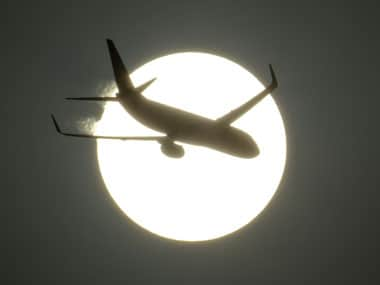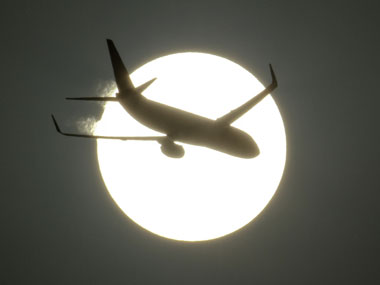New Delhi: Not a single state government has responded to a communication sent out by Civil Aviation Minister A Gajapathi Raju on the Regional Connectivity Scheme, where states’ support is crucial for the scheme’s takeoff. The ambitious RCS envisages getting remote areas of the country on the aviation map. It is at a proposal stage right now, as part of the Draft Civil Aviation Policy, which was unveiled earlier this month and is yet to be cleared by the cabinet.[caption id=“attachment_2197000” align=“alignleft” width=“380”]
 Aviation rules. Agency[/caption] A senior official of the Ministry of Civil Aviation told Firstpost Raju has written a letter to each chief minister, explaining the rationale of the RCS scheme and why state governments too need to offer incentives for getting enhanced air connectivity. “There has been no response as of now to the minister’s communication,” this official said. Another official said perhaps some state governments would be writing in by the month end, the deadline for public comments on the draft aviation policy. States’ disinterest in the scheme, at least till now, may not bode well for it. The RCS has already faced some criticism by India’s airlines, which have questioned the fare cap suggested in the draft policy for these routes at Rs 2,500 per hour. For several years, the ministry has been trying to increase regional connectivity through different schemes - some years back, it offered viability gap funding (VGF) for airlines wanting to mount flights on these unviable routes but even then, many state governments seemed reluctant to offer additional fiscal incentives to airlines to make the entire proposition viable. Earlier this month, reports suggested the Delhi government has raised VAT on ATF from 20 percent to 25 percent. Delhi has the country’s busiest airport so the state government may not lose out on the connectivity aspect but it will impact the cost of operations for all airlines lifting jet fuel from the capital. Under the RCS scheme which has been proposed this time, the Centre has offered VGF indexed to ATF prices and inflation for first 10 years and states have to chip in with only 20 percent share of this VGF fund. The Centre’s share of VGF will be provided through the Regional Connectivity Fund (RCF), which will be funded by a levy of 2 percent on all domestic and international tickets from January one next year. In effect, this means commuters in large metros and the Centre are already taking a lion’s share of the RCS financial burden. It would be a shame if states do not come forward even now to make RCS a reality. Besides chalking out detailed plans on making regional operations viable, the Centre has also proposed a new category of airlines, called Schedule Commuter Airlines, for RCS. The eligibility criteria for SCA has been kept easy - Rs 2 crore paid up capital, aircraft with capacity of 100 seats or less, no restrictions on number of aircraft for an SCA and eligibility to VGF. Landing, parking and navigation charges at non- RCS airports will also be lowered. If SCAs operate to Srinagar and the North East, these airlines may be considered for further subsidy from other Centre.
Aviation rules. Agency[/caption] A senior official of the Ministry of Civil Aviation told Firstpost Raju has written a letter to each chief minister, explaining the rationale of the RCS scheme and why state governments too need to offer incentives for getting enhanced air connectivity. “There has been no response as of now to the minister’s communication,” this official said. Another official said perhaps some state governments would be writing in by the month end, the deadline for public comments on the draft aviation policy. States’ disinterest in the scheme, at least till now, may not bode well for it. The RCS has already faced some criticism by India’s airlines, which have questioned the fare cap suggested in the draft policy for these routes at Rs 2,500 per hour. For several years, the ministry has been trying to increase regional connectivity through different schemes - some years back, it offered viability gap funding (VGF) for airlines wanting to mount flights on these unviable routes but even then, many state governments seemed reluctant to offer additional fiscal incentives to airlines to make the entire proposition viable. Earlier this month, reports suggested the Delhi government has raised VAT on ATF from 20 percent to 25 percent. Delhi has the country’s busiest airport so the state government may not lose out on the connectivity aspect but it will impact the cost of operations for all airlines lifting jet fuel from the capital. Under the RCS scheme which has been proposed this time, the Centre has offered VGF indexed to ATF prices and inflation for first 10 years and states have to chip in with only 20 percent share of this VGF fund. The Centre’s share of VGF will be provided through the Regional Connectivity Fund (RCF), which will be funded by a levy of 2 percent on all domestic and international tickets from January one next year. In effect, this means commuters in large metros and the Centre are already taking a lion’s share of the RCS financial burden. It would be a shame if states do not come forward even now to make RCS a reality. Besides chalking out detailed plans on making regional operations viable, the Centre has also proposed a new category of airlines, called Schedule Commuter Airlines, for RCS. The eligibility criteria for SCA has been kept easy - Rs 2 crore paid up capital, aircraft with capacity of 100 seats or less, no restrictions on number of aircraft for an SCA and eligibility to VGF. Landing, parking and navigation charges at non- RCS airports will also be lowered. If SCAs operate to Srinagar and the North East, these airlines may be considered for further subsidy from other Centre.
States should come forward with incentives for regional connectivity, none on board so far
Sindhu Bhattacharya
• November 19, 2015, 15:48:43 IST
Under the RCS scheme which has been proposed this time, the Centre has offered VGF indexed to ATF prices and inflation for first 10 years and states have to chip in with only 20 percent share of this VGF fund.
Advertisement
)
End of Article